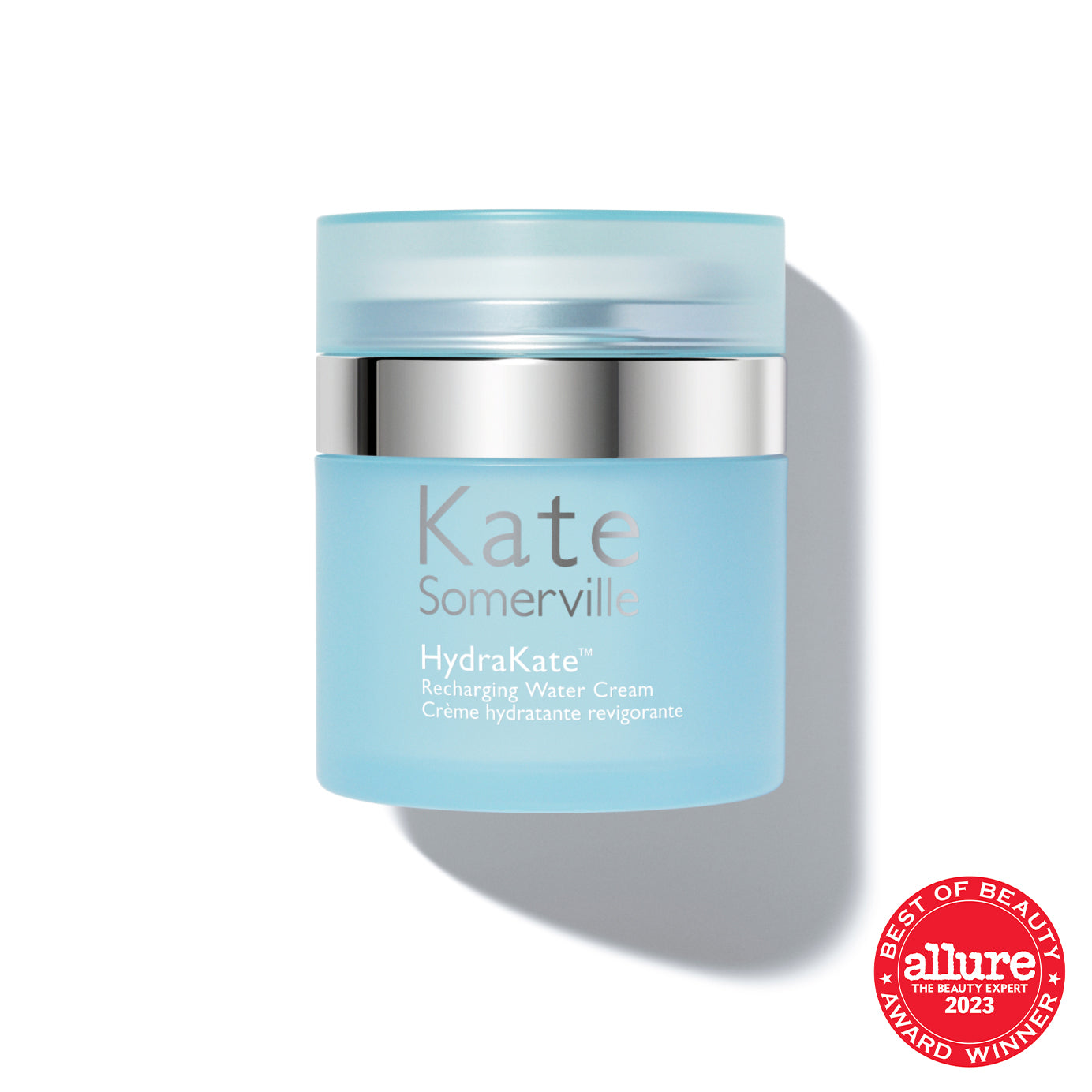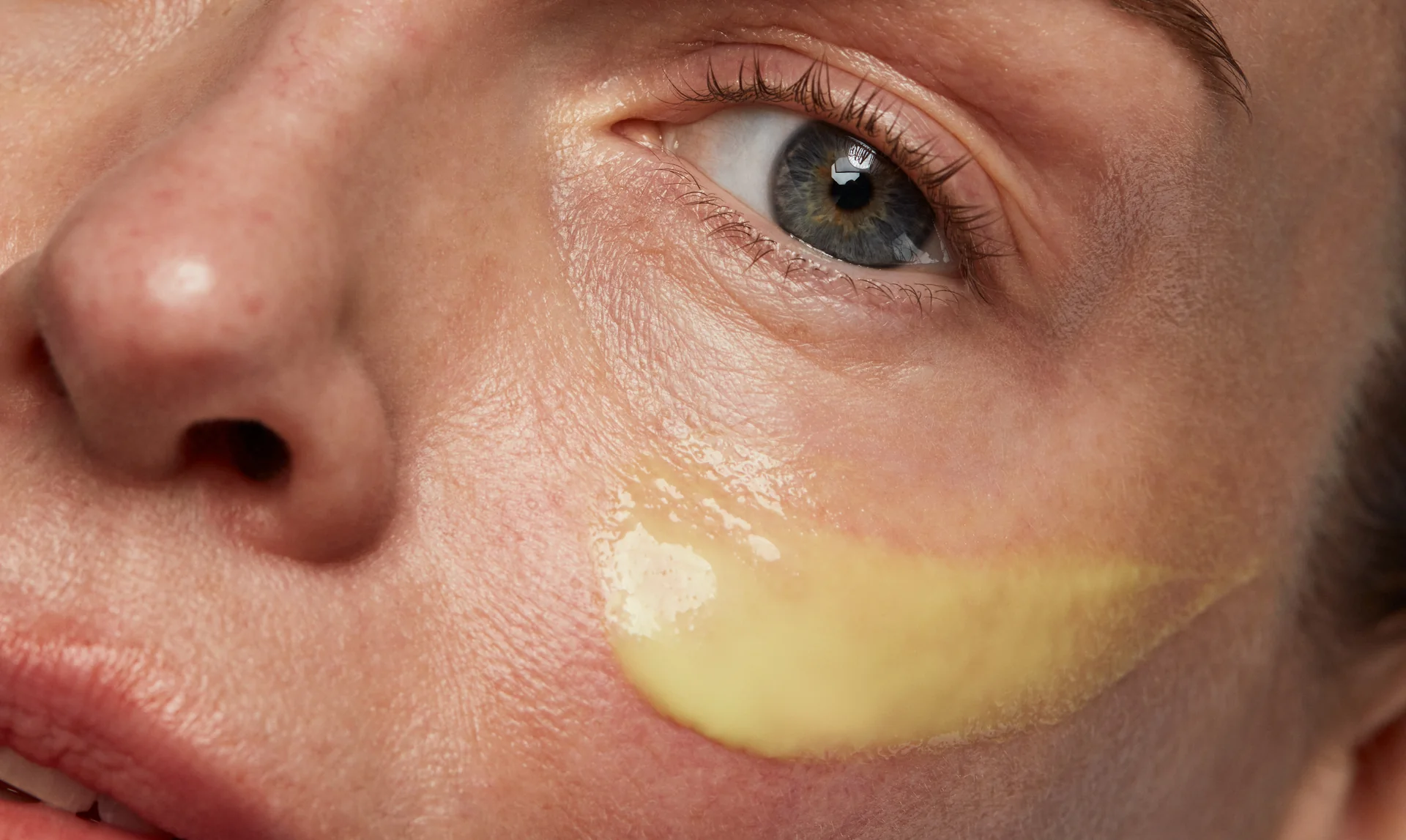In today’s world, our skin is exposed to many different elements that can cause it to look dull, tired, and dry. From environmental pollutants and sun damage to alcohol consumption and a poor diet, the choices you make and the things you endure every day may be the reason that your skin doesn’t have a bright, dewy glow. Thankfully, there are simple steps you can take to improve the appearance of your skin and put you on the path to the beautiful skin you deserve. To address dullness, it starts with exfoliation.
Now, there are a number of different exfoliators you may choose to use including both physical and chemical exfoliates. Just as it sounds, physical exfoliants use an abrasive substance to actually remove dirt and debris from the surface of your face. Chemical exfoliation, on the other hand, uses substances such as acids or enzymes to dissolve or lift dead skin off your face. Some of the most common chemical exfoliants, including glycolic acid and retinol, are extremely effective but can irritate the skin and should be avoided if you have particularly sensitive skin. This is where lactic acid in skincare is a game changer.
The Benefits of Lactic Acid
Like its more aggressive cousin glycolic acid, lactic acid is part of a family of ingredients known as alpha hydroxy acids (AHA). These acids are all made from natural sources such as fruit, sugar, or milk and in the case of lactic acid, it is the latter. Skin care products with lactic acid are able to provide many of the same benefits as other AHAs but are usually safe for use on sensitive skin which might be its most notable characteristic. This is because lactic acid is a non-friction exfoliant which works by breaking down and dissolving dead skin without causing irritation [1]. As an exfoliator, here are some of the primary benefits of lactic acid for skin:
Brightens & Evens Skin Tone
As lactic acid works to slough away dead skin cells, it also helps to fade away any unevenness in your skin tone that might be the result of previous sun damage in the appearance of dark spots, age spots, or even hyperpigmentation [2]. Not only that, lactic acid also helps stimulate skin cell turnover and renewal [3] so you reveal glowing, younger looking skin as you use the products.
Reduces Signs of Aging
Lactic acid in skin care products is also able to improve the appearance of fine lines and reduce eye wrinkles on your face with lactic acid wrinkle cream. In addition to gently removing the layers of skin primarily containing these lines, lactic acid helps to increase the skin’s firmness and thickness [4] , essentially resurfacing the skin without much effort.
Soothes & Smooths
By improving the skin's natural hydration, lactic acid prevents dry skin and helps to keep the skin moisturized [5] while also smoothing away any skin texture imperfections. This is crucial for anyone with sensitive skin or other related conditions such as psoriasis or eczema. It is even safe for those who are pregnant, who may be experiencing increased sensitivity or darkening skin, to use lactic acid products.
Minimizes Congestion
Congested skin most commonly manifests as clogged pores and acne breakouts. Removing the dead skin from the surface of your face helps prevent this congestion for acne-prone skin, but the fact that lactic acid does not dry out your skin is important in reducing acne as well. Though it seems counterintuitive, skin that is overly dry can actually result in oily skin
and more breakouts as the skin produces more oils in an attempt to balance moisture levels.
Possible Side Effects
As with everything, there are some possible side effects and reasons to avoid lactic acid in skincare. Most importantly, as with nearly all AHAs, lactic acid can increase your skin’s sensitivity to the sun. So when you are using lactic acid skin care products, you will need to ensure that you are wearing SPF sunscreen every day and continue to do so for some time after you discontinue usage as some studies suggest it may take your skin up to two weeks to readjust.
In addition, there are certain conditions under which you would want to avoid lactic acid in skincare altogether. When using topical retinoids such as Retin-A, adding a lactic acid product could cause your skin to become oversensitive. Similarly, if you are under the care of a physician and using prescription skin care medication, check with your doctor before using any lactic acid treatment as it may not be appropriate for your skin or react poorly with what you are already using. If you tend to have skin that is extremely sensitive, try starting with a low percentage product and slowly increase your usage. Monitor your skin closely and decrease or cease use if you notice any irritation begin to develop.
Lactic Acid Products
The lactic acid products that are currently available vary widely in concentration with levels anywhere from 5% to more than 30%. And despite what you may think, a higher concentration isn't always better as starting off with a high percentage product may unnecessarily irritate your skin. If you have never used lactic acid before, or it has been some time, start off with a low strength product around 5% to 10% max to let your skin adjust. You may find that this strength of product is effective and gives you the results you desire, in which case there is no need to level up. However, if you so choose you can gradually increase the concentration of lactic acid in the products you buy. You should always feel comfortable using the products you purchase and when it comes to lactic acid, you have options not only in the strength but in the type of product.
Cleansers
A lactic acid ExfoliKate® cleanser may be one of the easiest ways to incorporate this ingredient into your skincare routine. You simply use them as you would any other cleanser, being careful to avoid the delicate eye area as lactic acid may irritate these sensitive areas leaving them dry, flaky, and red. If you have sensitive skin, lactic acid cleansers are a particularly good option because once you rinse them off, the acid won’t be sitting on your skin for a long period of time, which helps to limit irritation.
Toners
Liquid toners and treatments containing lactic acid can be another easy way to add stronger products into your skincare routine. Simply apply the product to your face using a cotton round after you have cleansed and carry on with your routine. These products help to slough away dead skin, brighten your complexion, and refine the look of your pores all while you get a good night’s sleep.
Creams, Lotions, & Serums
Moisturizing creams, lotions, and serums are a great option for leave-on treatments containing lactic acid while providing extra hydration to help mitigate undesirable side effects. Using these products at night rather than during the day can help minimize the risk of sun damage, although you should still be using an SPF every morning. Depending on the strength of the product you should be able to use it every day but if you notice irritation, scale back your frequency to a couple of times a week. These types of leave-on moisturizer treatments are best for those wanting to use lactic acid long term, steadily improving the skin and maintaining results.
At-Home Peels & Masks
These products typically utilize higher concentrations of lactic acid than daily use products and are designed to deliver a stronger burst of exfoliation. Your use of a peel or mask should be limited to one to three times per week, or whatever is recommended on the product directions. In general, these at-home lactic acid intensive exfoliation treatments peels, masks, and facial scrubs have strengths of at least 10% and up to 30%. Again, for these products, it is crucial to begin with lower strengths and, if your skin responds well, slowly work your way up to higher concentrations if needed. If you’re experimenting with exfoliation for the first time, check out the tips and benefits of exfoliating from an esthetician. Also, be sure to not over-exfoliate. Read our related blog article to learn about how often to exfoliate.
In some stores, you may even be able to find products with higher levels marked as professional-grade with concentrations over 50%. Just because they are over the counter, does not mean you can’t injure yourself while using them. If you do not know what you are doing, it is best to leave the stronger peels in the hands of a professional dermatologist or esthetician, such as the Kate Somerville skin care clinic.
Professional Treatments
Lactic acid peels can also be done professionally at day or medical spas, dermatology offices, or cosmetic surgery practices. The strength of your treatment will actually dictate the type of professional you can see. For example, a superficial chemical peel can be done by an esthetician while a medical doctor is permitted to utilize treatments that go deeper. As these treatments can utilize concentrations of nearly 90%, it is important you feel comfortable with your practitioner, have thoroughly discussed the risks, and understand what is appropriate for your skin. Depending on the results you want to achieve, subsequent treatments may be used with increasing concentrations of lactic acid. Usually, a series of peels is recommended to see the most benefits.
Lactic acid is an incredibly popular skincare ingredient due to its generally safe track record with nearly all skin types. So long as you listen to your skin, follow the directions on the products you purchase and do not push yourself to use high concentration products too fast, you will most likely experience positive results with minimal irritation.
The key is to remember to protect your skin from the sun no matter which lactic acid product or treatment you are using. So lather on your sunscreen daily, even during the winter months when it is cold and cloudy. We hope this is already part of your routine as it is one of the best, and frankly easiest, ways to protect your skin from premature aging, sun spots, and skin cancer anyway. Find yourself asking, “How does sunscreen work and protect my skin?” Check out our related post to learn how.
Sources:
- https://www.ncbi.nlm.nih.gov/pmc/articles/PMC3900339/
- https://www.aad.org/media/news-releases/variety-of-options-available-to-treat-pigmentation-problems
- https://onlinelibrary.wiley.com/doi/abs/10.1111/j.1524-4725.1998.tb04221.x
- https://www.jaad.org/article/S0190-9622(96)90602-7/abstract
- https://www.aad.org/public/diseases/bumps-and-growths/keratosis-pilaris#treatment











